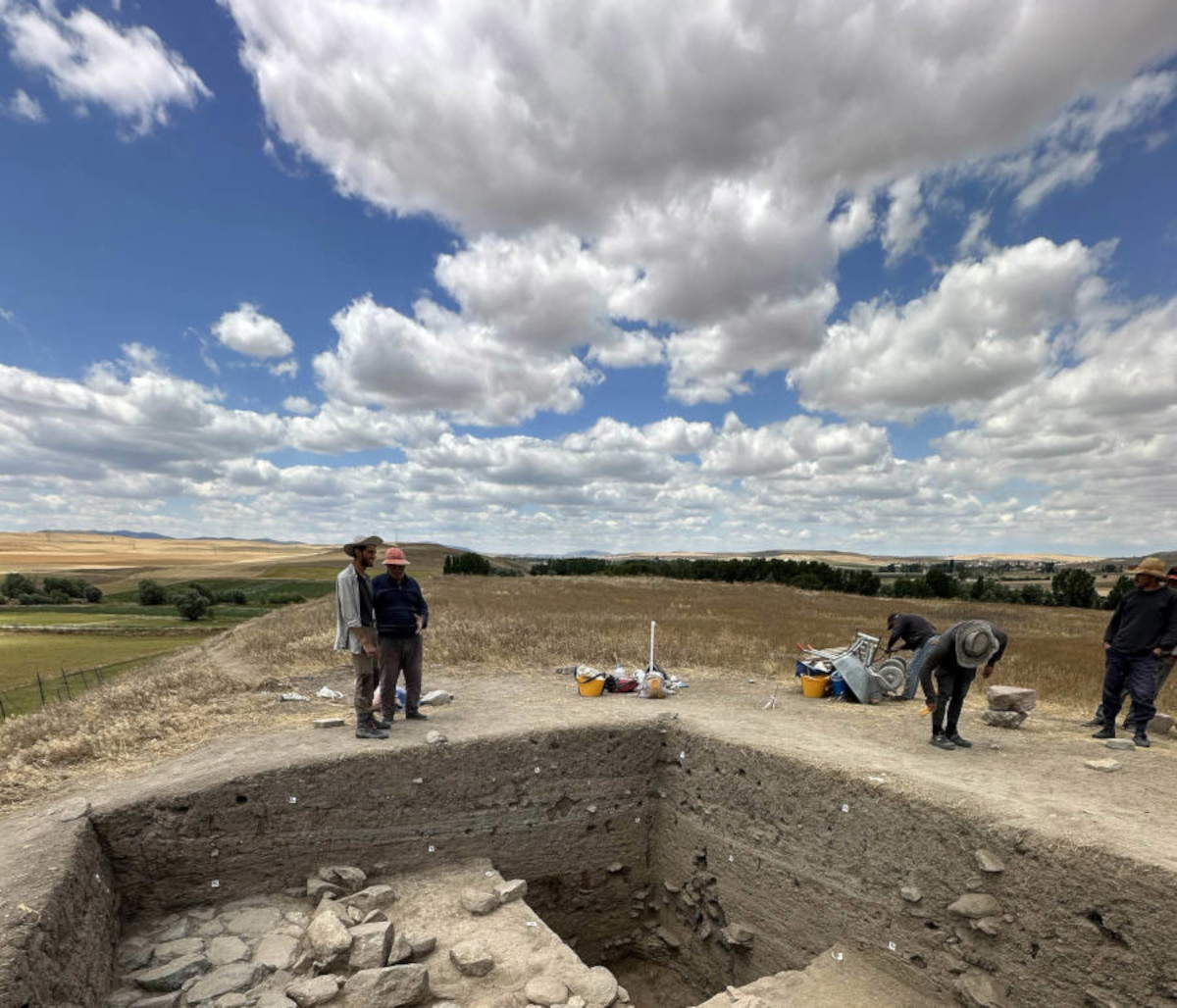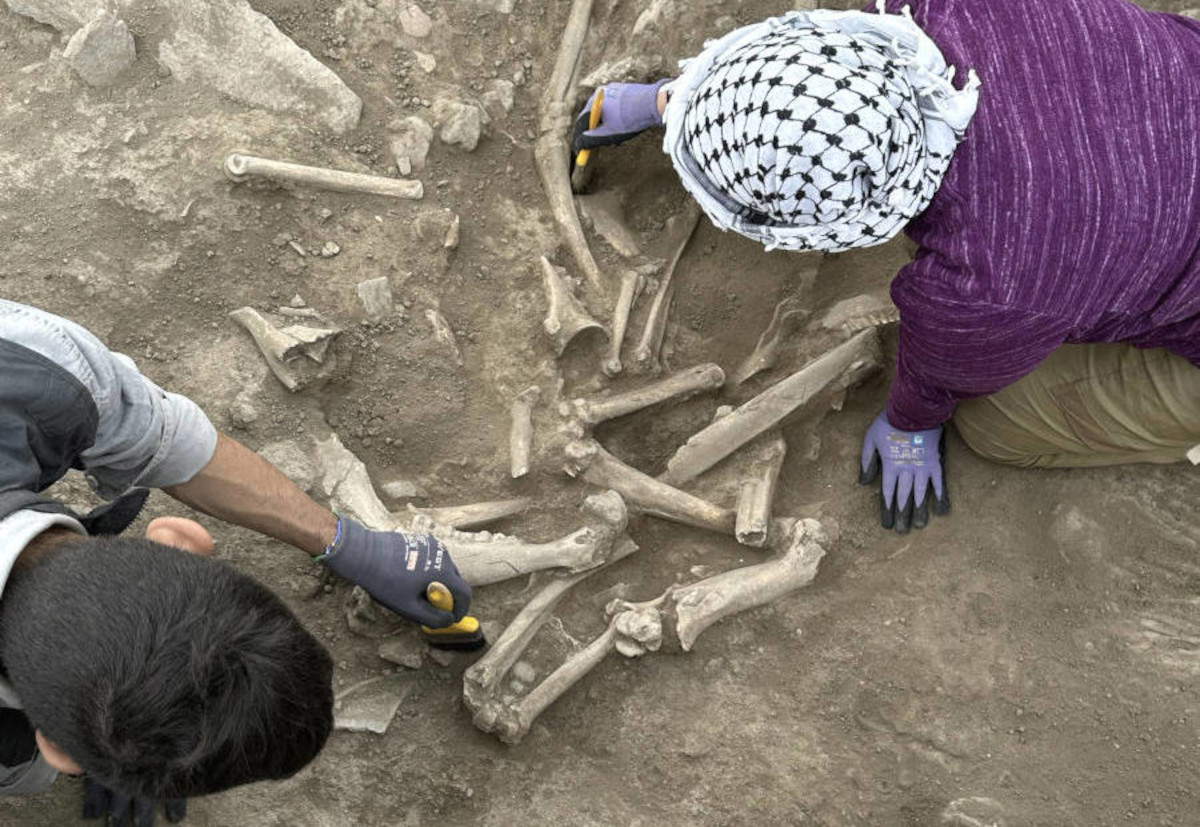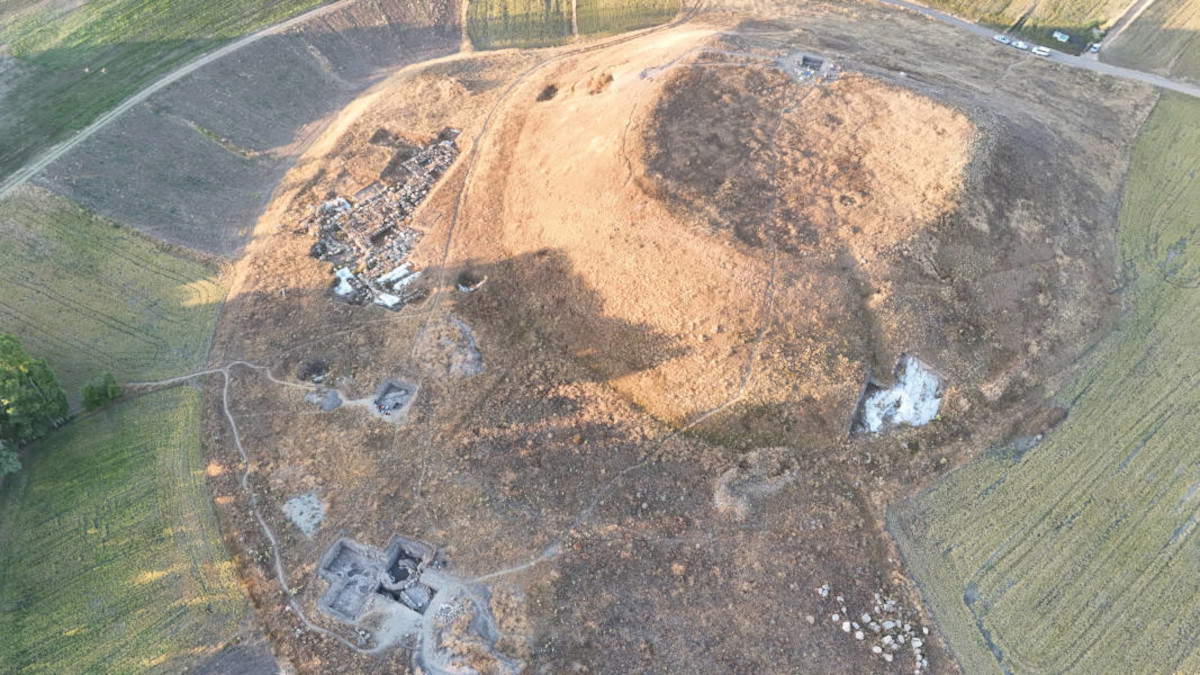The 18th excavation campaign of the Italian Archaeological Mission in Central Anatolia, conducted by the University of Pisa at the site of Uşaklı Höyük on the Central Anatolian Plateau, has recently concluded. The activity led to major discoveries, including the discovery of infant human remains in a context that suggests ritual practices from the Hittite period. The group of Pisan archaeologists, led by Anacleto D’Agostino, professor of West Asian Archaeology and Art History, consisted of students and archaeologists from the Department of Civilizations and Forms of Knowledge and operated in an international project together with researchers from Koç (Istanbul), Siena, Florence, UCL (London), Bozok (Yozgat), Sapienza (Rome) and Hacettepe (Ankara) universities.
More recent investigations have deepened knowledge of the so-called Hittite-era Circular Structure, identified in 2021, helping to clarify its function and context of use. The excavations have also provided useful elements for understanding the evolution of the settlement since the Iron Age, offering new interpretations on the changing social and political structures.
Among the finds of greatest interest are the remains of seven infants, in close connection with the Circular Structure, an enigmatic architectural stone structure that had previously raised speculation about its cultic function. The bones are not placed in actual graves, but are accompanied by ceramic fragments, ashes and animal remains. Although the Hittite sources lack precise indications of rituals for deceased children, the Uşaklı discoveries reinforce the idea of an area designated for their deposition, analogous to Phoenician and Punic tophet.
Particularly significant is the discovery of a child’s tooth, which will be able to provide absolute dating and, thanks to its good state of preservation and clear stratigraphic placement, genetic data on the site’s Hittite population, through DNA analyses underway at the Human_G laboratory of Hacettepe University in Ankara.

The context of these findings is Area F, where new walls attributable to a late phase of Hittite occupation have emerged. The walls respect the presence of the Circular Structure, suggesting its continued use and recognition of its value over time. On the eastern side, the layers of paving stones indicate prolonged frequentation, perhaps of a cultic nature. This evidence makes more plausible the hypothesis that the structure was central to the settlement’s sacred space, in relation to the worship of the Storm God, the main deity of the Hittite city of Zippalanda, which several scholars now identify with Uşaklı Höyük.
In addition to Area F, the 2025 campaign covered the acropolis, where for the first time a picture of the dwellings and open spaces between the Iron Age and the Hellenistic period was reconstructed. An assay at a depth of four meters revealed a destruction deposit with burned stones and ashes, datable to the Middle Iron Age, which may offer new insights into an era still poorly documented in the region. The sequence of paved floors and fire points, together with the discovery of a stone brazier, indicates a continuity of use of the area; the absence of medieval traces, present instead in the lower town, confirms the abandonment of the area in later times.
In Area G, on the other hand, the study of the medieval necropolis continues: genetic analyses on a buried family are providing information on the medieval settlement of the Anatolian plateau after the Battle of Manzinkert (1071 AD).

Alongside the architectural and anthropological data, the study of the finds has provided insights into dietary, production and ritual practices. The variety of animal species found, both domestic and wild, reflects a heterogeneous landscape and a mixed farming and hunting economy. In Area F, a late-period pit containing whole remains of horses, donkeys, cattle, goats, and a hare may be related to ceremonies or collective events. Analysis on pottery continues with experiments in food archaeology, while the study of seeds, coals and floated soil samples aims to reconstruct the environmental context and agricultural practices.
Research on human and animal DNA promises to expand the biological knowledge of ancient Anatolian populations.
The project, the only Italian mission to a Hittite settlement in the heart of its homeland, is a collaboration between the University of Pisa and Turkish and European institutions, made possible by the support of Turkey’s Directorate General of Cultural Heritage and funded by the Italian Ministry of Foreign Affairs and International Cooperation, the Foundation for the Mediterranean East, the University of Oxford and the PRIN AlandA Project with Next Generation EU funds.

 |
| University of Pisa archaeologists in central Anatolia: new discoveries in the enigmatic Circular Structure |
Warning: the translation into English of the original Italian article was created using automatic tools. We undertake to review all articles, but we do not guarantee the total absence of inaccuracies in the translation due to the program. You can find the original by clicking on the ITA button. If you find any mistake,please contact us.